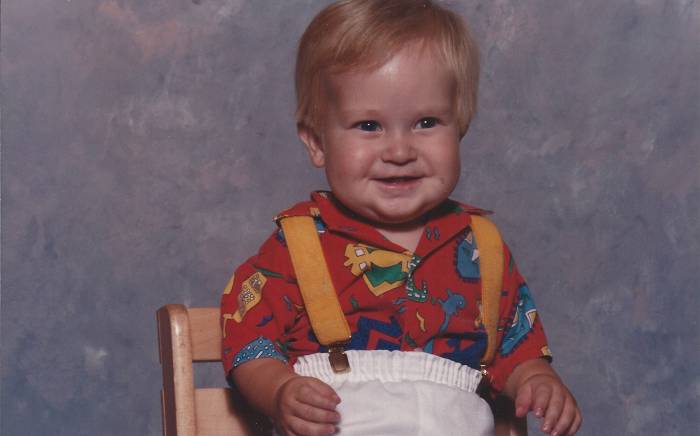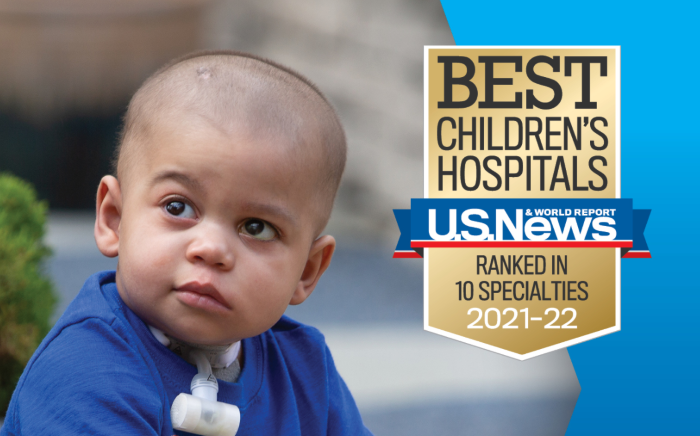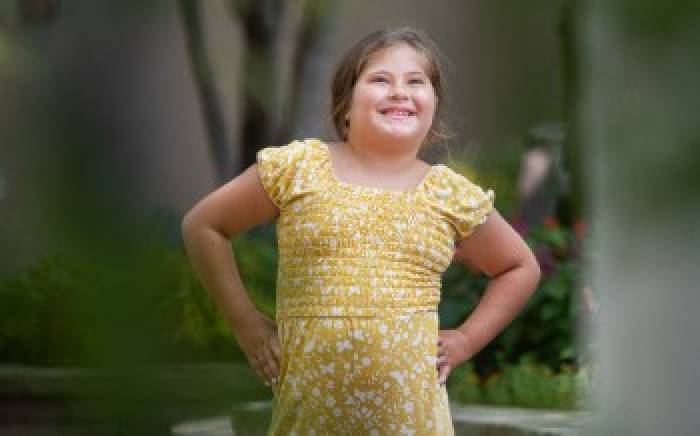A rare heart condition doesn’t stop Nia Hughes from doing what she loves
Eight-year-old Nia Hughes is a vibrant and active third grader. She loves math, art and spending time with her family. In  July 2018, she was with her Nana in Chicago, eagerly awaiting her aunt and younger cousins to come visit. The minute Nia saw them arrive, she ran for the staircase to meet them. Soon, her Nana realized something was wrong.
July 2018, she was with her Nana in Chicago, eagerly awaiting her aunt and younger cousins to come visit. The minute Nia saw them arrive, she ran for the staircase to meet them. Soon, her Nana realized something was wrong.
“Nia had fainted before she could make it down the stairs,” says Tria Blackburn, Nia’s mother. “It was the first of many spells she experienced.”
After another fainting spell, Nick Hughes, Nia’s dad, took his daughter to see her pediatrician. Their provider recommended Nia be tested for seizures, but Nia’s results showed no signs of a neurological condition.
“We were worried when the tests came back negative,” Tria says. “We didn’t know which direction to go to help our baby girl.”
When Nia passed out again, just after her seventh birthday, Tria and Nick took her to St. Louis Children’s Hospital. George Van Hare, MD, Washington University pediatric cardiologist at St. Louis Children’s Hospital, was on call.
“There were a number of red flags, including Nia’s age and how suddenly her fainting spells occurred, that led me to believe she may have a heart condition,” Dr. Van Hare says.
Next Steps
Dr. Van Hare diagnosed Nia with catecholaminergic polymorphic ventricular tachycardia (CPVT). It is a rare, genetic condition that causes the heart to beat extremely fast. Nia’s heart would sometimes beat up to 300 beats per minute, which caused her fainting spells. The first step in Nia’s treatment plan was beta blockers, medications that block the effects of adrenaline on the heart. While this treatment is helpful for most cases of CVPT, Nia required an implantable cardioverter-defibrillator (ICD).
“It was scary to find out she was going to need surgery, but Nia was unable to play at recess without the risk of another fainting spell,” Tria says. “We wanted our daughter to be able to play, so we accepted this would be her new normal.”
A Happy Heart
Nia’s surgery was a success, and she is still the same energetic young girl. She loves gymnastics, cheerleading and  playing with her friends, but now she does it all with “a little machine in her belly,” as Nia calls it. Her ICD allows her to live her life without the risk of another fainting episode. Nia also meets with Dr. Van Hare and his team every six months to ensure her ICD is working properly, as well as performing routine checkups.
playing with her friends, but now she does it all with “a little machine in her belly,” as Nia calls it. Her ICD allows her to live her life without the risk of another fainting episode. Nia also meets with Dr. Van Hare and his team every six months to ensure her ICD is working properly, as well as performing routine checkups.
“Life hasn’t been easy for Nia,” her mother admits, “but we make sure she smiles every day.”
Kids and Fainting: What’s Normal, What’s Not
“Fainting is fairly common in teens and young adults,” says Dr. Van Hare. “Most teens will have an episode of fainting or almost-fainting at some point. It is usually benign, but it may be a sign of something more serious.”
Dr. Van Hare recommends parents take any child who has a fainting episode to see their physician. "We recommend that all children who faint have an electrocardiogram,” Dr. Van Hare says. “If there is a concern, especially with a child as young as Nia, we also recommend they see a pediatric cardiologist for further evaluation.”








